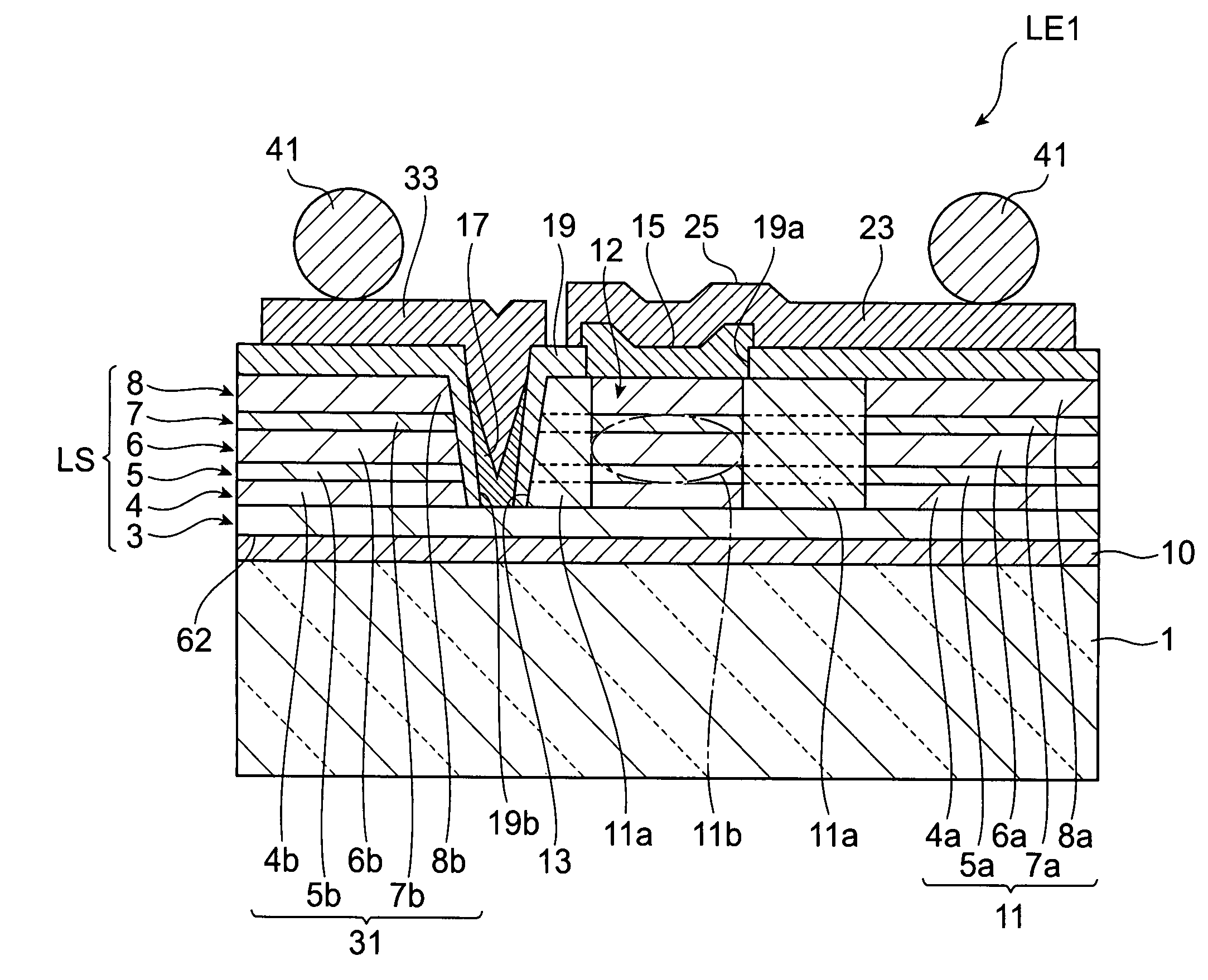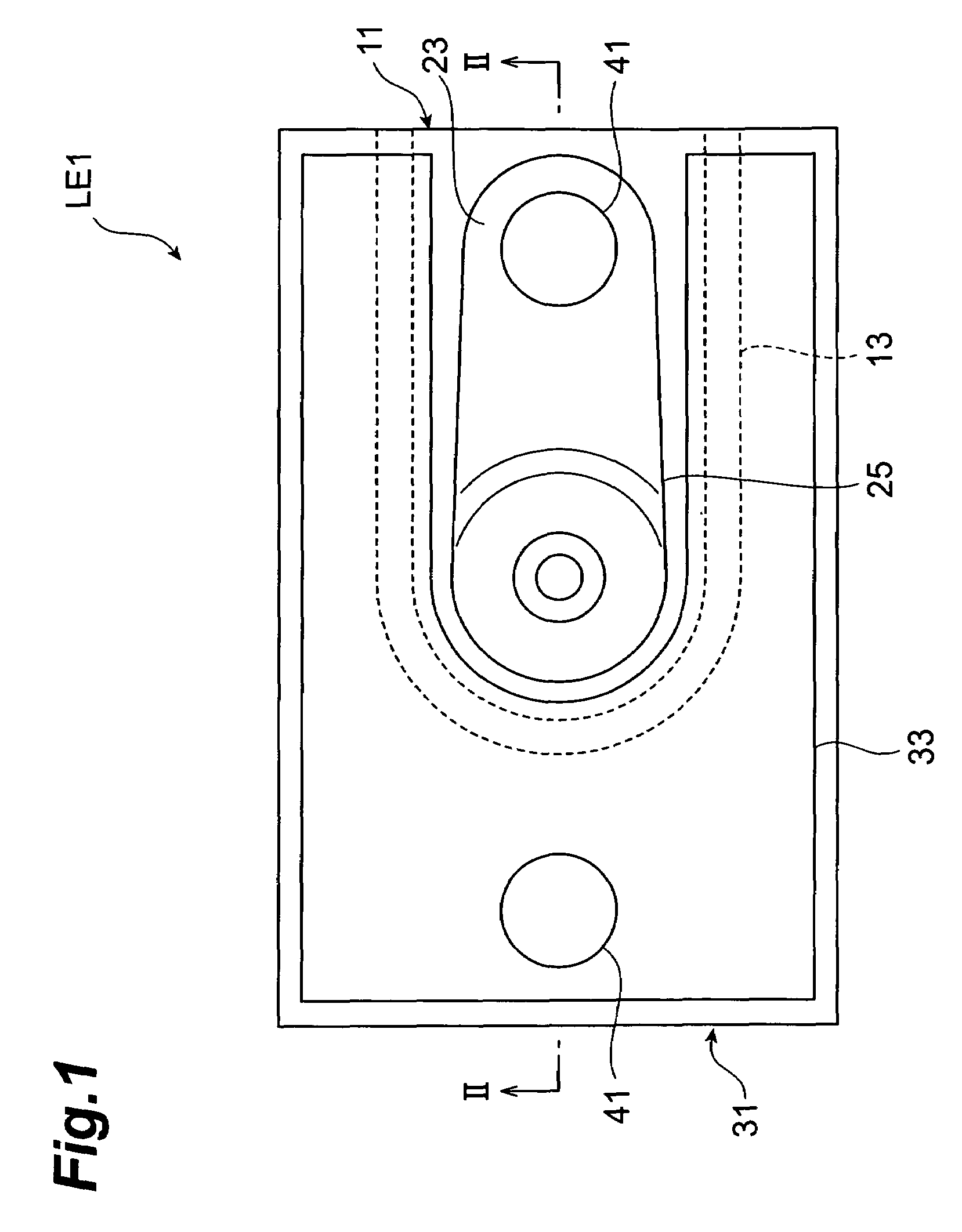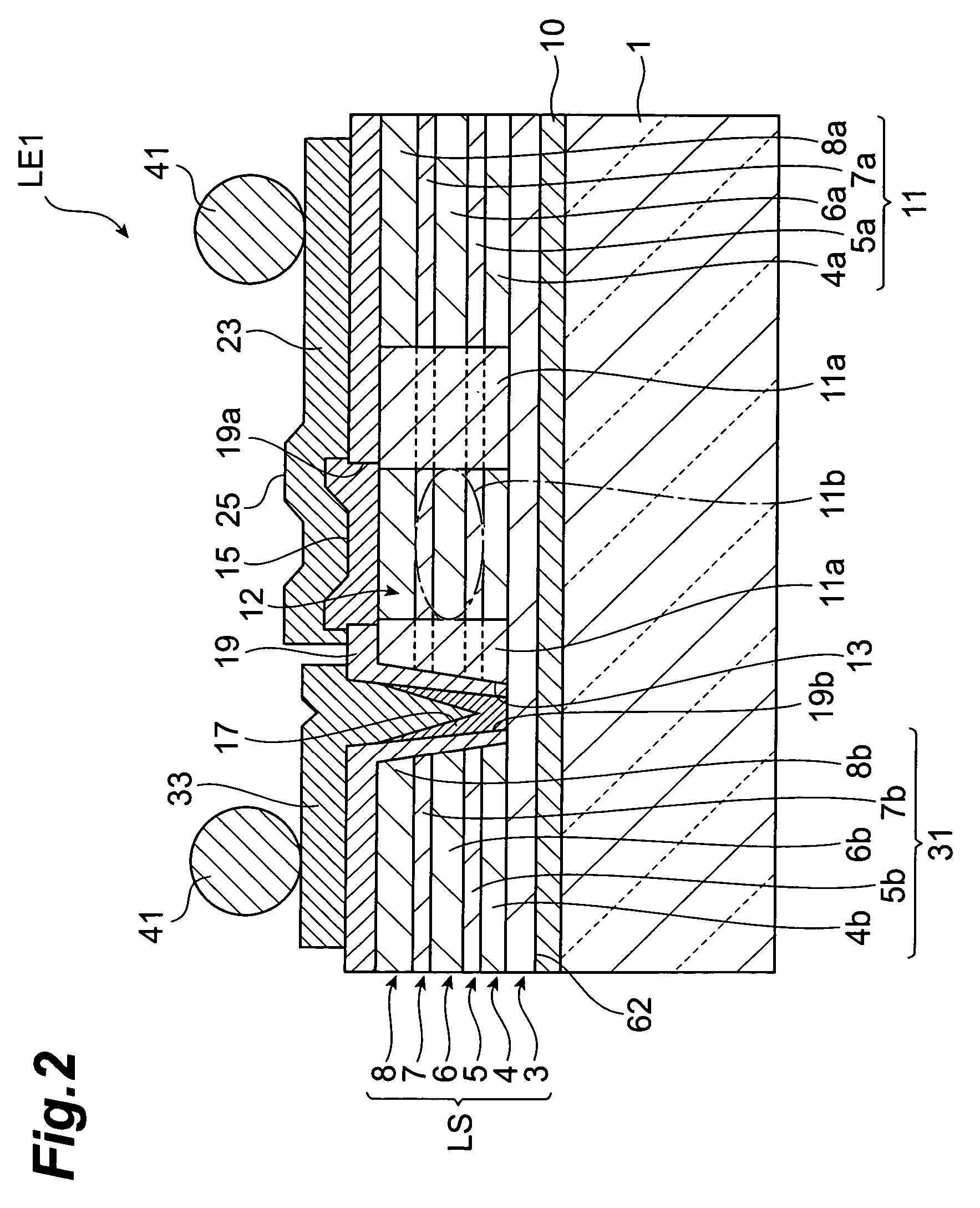Semiconductor light-emitting device and its manufacturing method
a technology of semiconductor light-emitting devices and manufacturing methods, which is applied in the direction of lasers, semiconductor laser structural details, semiconductor lasers, etc., can solve the problems of limiting the minimal size of the above-mentioned semiconductor light-emitting devices and inevitably increasing the size of the light-emitting device array, and achieves small size and sufficient mechanical strength.
- Summary
- Abstract
- Description
- Claims
- Application Information
AI Technical Summary
Benefits of technology
Problems solved by technology
Method used
Image
Examples
first embodiment
[0044]FIG. 1 is a schematic plan view showing a semiconductor light-emitting device in accordance with the first embodiment. FIG. 2 is a schematic sectional view taken along line II-II in FIG. 1.
[0045]The semiconductor light-emitting device LE1 has a multilayer structure LS and a glass substrate 1. This semiconductor light-emitting device LE1 is a vertical cavity surface emitting laser (VCSEL) of back emission type which emits light from the side of the glass substrate 1. The semiconductor light-emitting device LE1 is a light-emitting device for short-distance optical communications in the wavelength band of 0.85 μm, for example.
[0046]The multilayer structure LS includes a p-type (first conductive type) contact layer 3, a p-type first distributed Bragg reflector (DBR) layer 4, a p-type first cladding layer 5, an active layer 6, an n-type (second conductive type) second cladding layer 7, and an n-type second DBR layer 8. The multilayer structure LS generates light when a voltage is a...
second embodiment
[0105]FIG. 11 is a schematic sectional view showing the structure of a semiconductor light-emitting device in accordance with the second embodiment. The semiconductor light-emitting device LE2 differs from the semiconductor light-emitting device LE1 of the first embodiment in that the glass substrate 1 is formed with a lens part 72a.
[0106]The semiconductor light-emitting device LE2 comprises a multilayer structure LS and a glass substrate 1. The semiconductor LE1 is a VCSEL of back emission type which emits light from the side of the glass substrate 1. The semiconductor light-emitting device LE1 is a light-emitting device for short-distance optical communications in the wavelength band of 0.85 μm, for example.
[0107]The rear face 72 of the glass substrate 1 is formed with the lens part 72a for receiving the light emitted from the multilayer structure LS. The other part 72b in the rear face 72 is raised from the lens part 72a. Namely, the lens part 72a is depressed from the most rais...
PUM
 Login to View More
Login to View More Abstract
Description
Claims
Application Information
 Login to View More
Login to View More - R&D
- Intellectual Property
- Life Sciences
- Materials
- Tech Scout
- Unparalleled Data Quality
- Higher Quality Content
- 60% Fewer Hallucinations
Browse by: Latest US Patents, China's latest patents, Technical Efficacy Thesaurus, Application Domain, Technology Topic, Popular Technical Reports.
© 2025 PatSnap. All rights reserved.Legal|Privacy policy|Modern Slavery Act Transparency Statement|Sitemap|About US| Contact US: help@patsnap.com



